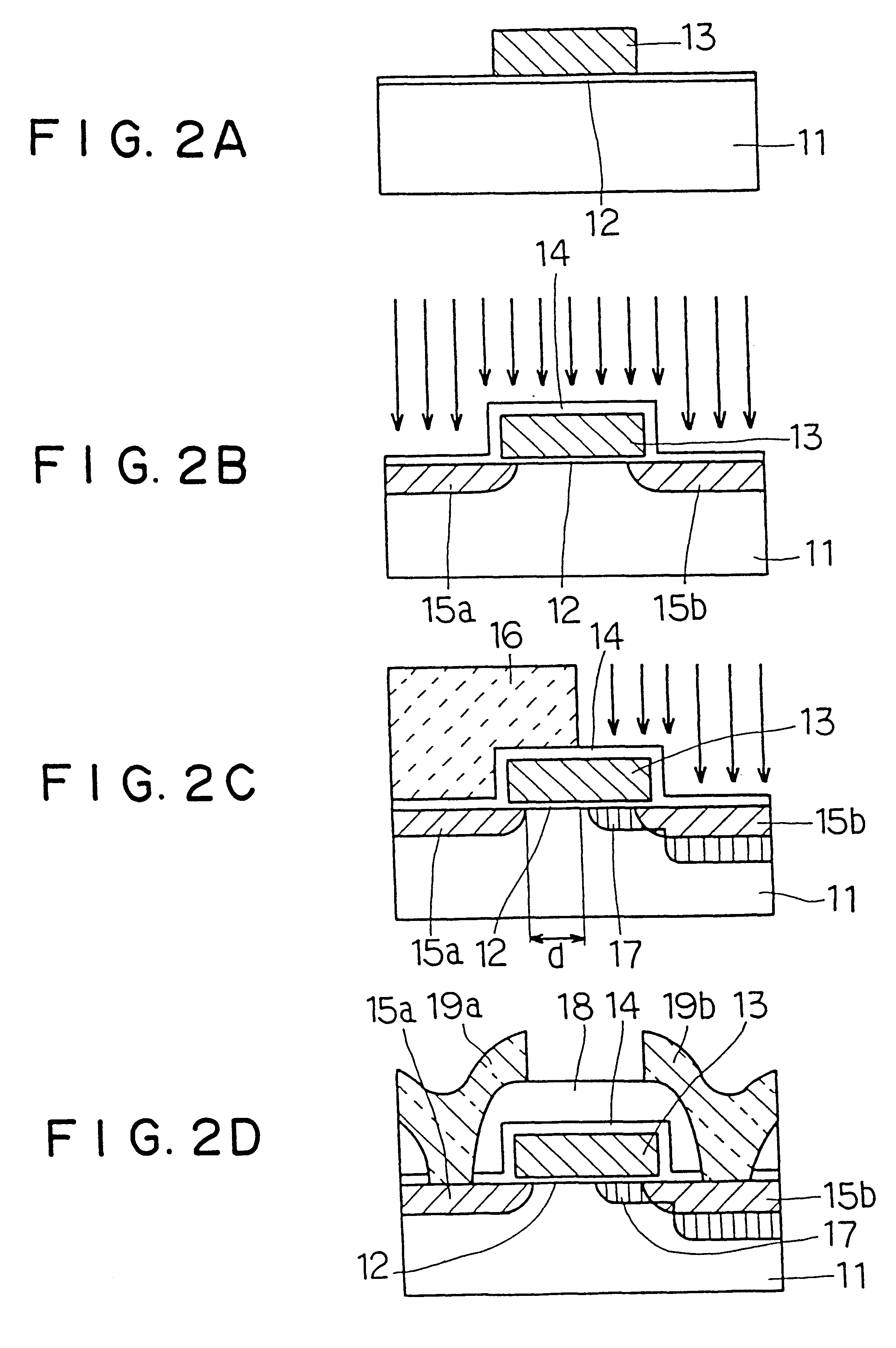Semiconductor device and fabrication process thereof
a semiconductor and semiconductor technology, applied in the direction of semiconductor devices, electrical devices, transistors, etc., can solve the problems of leakage current, power consumption also increases, leakage current does not decline sufficiently,
- Summary
- Abstract
- Description
- Claims
- Application Information
AI Technical Summary
Problems solved by technology
Method used
Image
Examples
first embodiment
FIG. 1 shows the present invention, and indicates a sectional view of a ROM as a semiconductor memory device which is one enhancement-type transistor.
In a MOS transistor having a gate oxide film 12 on a P-type semiconductor substrate (or P-type well region provided in a substrate) 11 and a polycrystalline silicon gate electrode 13 provided further thereabove, a high-concentration P-type region 17 formed by implantation acceptor dopant (for example boron) is formed only in a proximity of a source region 15b, and is structured so that the high-concentration P-type region 17 is not contiguous with a drain region 15a.
In FIG. 1, dotted lines in the proximity of the source and drain regions show expansion states of depletion layers extending under a condition that a drain voltage is set at 5V while a gate voltage, a source voltage and substrate voltage are set at 0V. The depletion layer (dep2) on the side of the source region 15b extends a small amount, but the depletion layer (dep1) on t...
second embodiment
FIG. 9 indicates a second embodiment according to the present invention.
In this second embodiment, both a drain region 15a and a source region 15b are set such that a high-concentration P-type region 17 is not contiguous. FIG. 9 indicates a portion corresponding to the step in FIG. 2C.
In an enhancement-type ROM obtained by the step indicated in this FIG. 9, heavily leakage current is not generated even when high potential with respect to a substrate 11 is applied to both the drain region 15a and the source region 15b. Moreover, because the source and drain regions can be utilized oppositely, there exists an advantage that a degree of freedom in circuit design is improved.
third embodiment
FIG. 10 indicates a third embodiment according to the present invention.
In this third embodiment, in contrast to the above-described first embodiment, ion implantation to cause threshold voltage to be raised is performed from an oblique direction (approximately 45 degrees is employed as an implantation angle .theta.) to form a high-concentration P-type region 17. FIG. 10 indicates a portion corresponding to the step in FIG. 2C.
In this case, when acceleration voltage (or cceleration energy) at a time of ion implantation is regulated, i.e., established so that ions injected from a side surface 131 of a gate electrode 13 reach a channel region and ions injected from an upper surface 132 of the gate electrode 13 do not reach the channel region, ions reach only a proximity of the source region 15b, and an effect similar to the first embodiment is obtained.
A concept of a method of regulation of acceleration voltage in ion implantation will be described with reference to FIGS. 11A through ...
PUM
 Login to View More
Login to View More Abstract
Description
Claims
Application Information
 Login to View More
Login to View More - R&D
- Intellectual Property
- Life Sciences
- Materials
- Tech Scout
- Unparalleled Data Quality
- Higher Quality Content
- 60% Fewer Hallucinations
Browse by: Latest US Patents, China's latest patents, Technical Efficacy Thesaurus, Application Domain, Technology Topic, Popular Technical Reports.
© 2025 PatSnap. All rights reserved.Legal|Privacy policy|Modern Slavery Act Transparency Statement|Sitemap|About US| Contact US: help@patsnap.com



